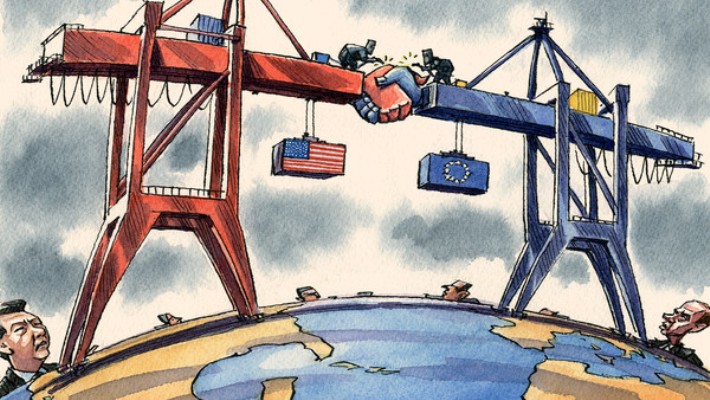The Transatlantic Trade and Investment Partnership, What’s in it for us? (Part 1/2)
We all know that there is a trade agreement being made between the US and the EU. But do we really know what this partnership is all about, and at the end of the day what it means for us? Shall we try and figure this out?
We all know that there is a trade agreement being made between the US and the EU. But do we really know what this partnership is all about, and at the end of the day what it means for us? Shall we try and figure this out?

To begin with, the idea of a transatlantic trade and investment partnership in its most recent form was first requested by President Barack Obama on 12 February 2013 in his annual State of the Union address. He devoted only one sentence to the subject, but it was the green light those who were in favour of such a deal had been waiting for. "And tonight, I'm announcing that we will launch talks on a comprehensive Transatlantic Trade and Investment Partnership with the European Union," he said.
The next day in Brussels, then EU Commission President Jose Manuel Barroso said: "These negotiations will set a standard, not only for our future bilateral trade and investment, including regulatory issues, but also for the development of global trade rules."
In effect, negotiations take the forms of rounds, each one taking place in the EU and the US alternatively. Negotiations started in July 2013 with rounds of negotiations taking place every few weeks. Both the US and the EU want to avoid years of negotiating and come up with an agreement quickly. But keeping in mind that the most important was to get a good result for both parties. The 11th and latest round of negotiations took place from 19 to 23 October in Miami, FL.
The European Commission sits in for the 28 European countries and negotiate on their behalf while on the other side of the table the United States Trade Representative and his team negotiate for the US. The European commission consults each of the 28 countries on the negotiating position and inform them of the developments, thus remaining in close contact with them before and after each round of negotiation. It also regularly reports to the European Parliament.
Once negotiators will have come up with an agreement, the text of the agreement will be posted on the European Commission’s website. Then, each EU states, along with the European Parliament, will find themselves in a position to either accept or reject it.
The “physical” objective of TTIP is to cut red tape, and to get rid of custom duties and investment restrictions on each side of the Atlantic. It is easy to understand that such restraints now forbid some small and medium businesses from trading and refrain some other big ones from selling goods and services to the other side.
In the EU, we already have 30 million jobs that depend on exports and 3.5 million people that work for US companies. This is why it is believed that this would help boost Europe’s economy and create new jobs.
Currently the US and EU standards and regulations are seldom the same. TTIP would help in that way, bringing them more in line with each other without lowering consumer, health or environmental standards. That would help companies lowering their cost as it would mean that they no longer have to sell different goods to the US and the EU. And as far as consumers are concerned, they could confidently buy a wider range of goods at a lower price, knowing they meet the highest standards of safety.
Sources:
http://ec.europa.eu/trade/policy/in-focus/ttip/about-ttip/questions-and-answers
Questions and answers
http://www.nytimes.com/2013/02/14/business/global/obama-pledges-trade-pact-talks-with-eu.html?_r=0
A Running Start for a U.S.-Europe Trade Pact
http://www.bbc.com/news/business-21439945
EU and US free-trade talks launched